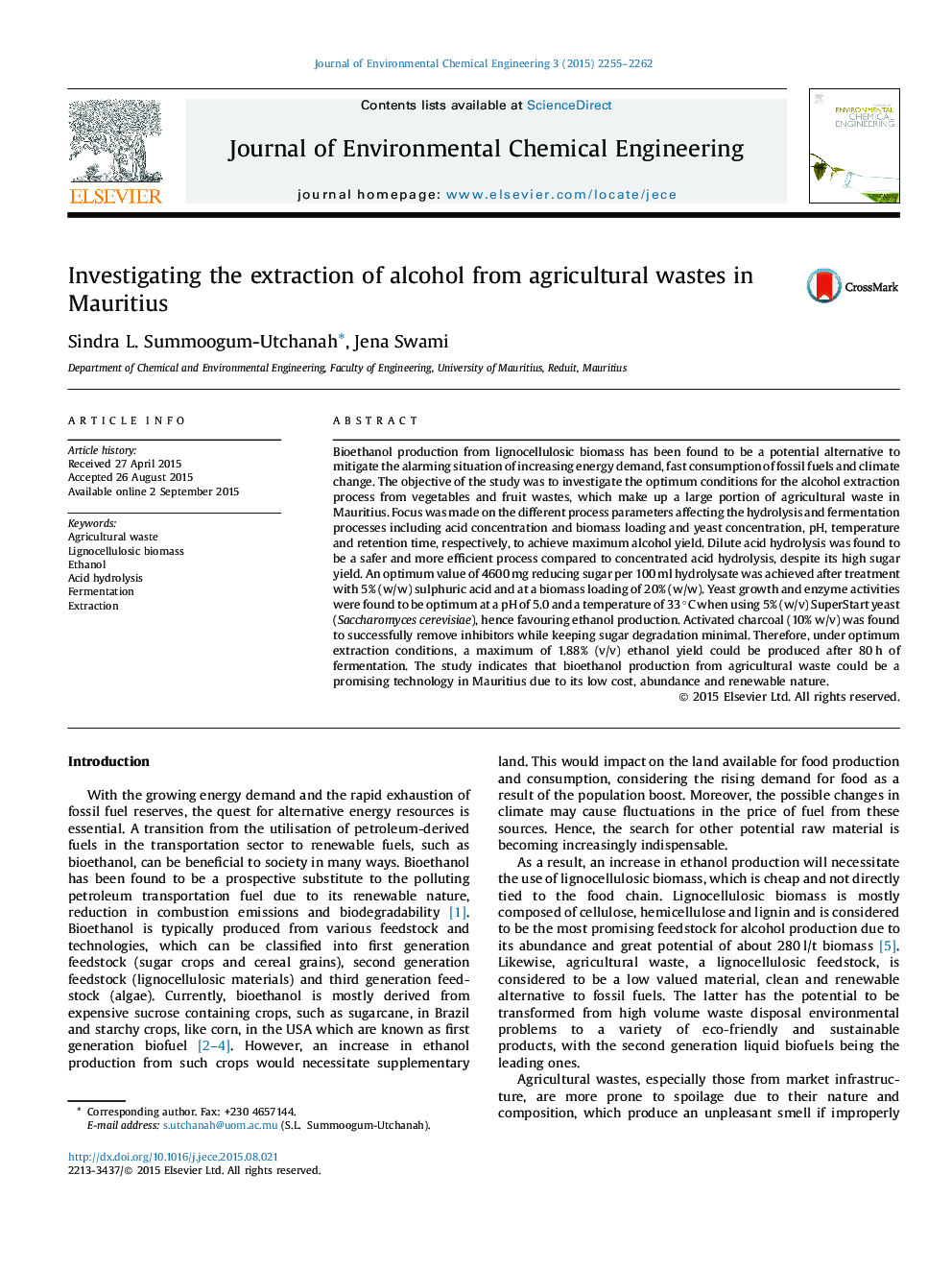| Article ID | Journal | Published Year | Pages | File Type |
|---|---|---|---|---|
| 222028 | Journal of Environmental Chemical Engineering | 2015 | 8 Pages |
Bioethanol production from lignocellulosic biomass has been found to be a potential alternative to mitigate the alarming situation of increasing energy demand, fast consumption of fossil fuels and climate change. The objective of the study was to investigate the optimum conditions for the alcohol extraction process from vegetables and fruit wastes, which make up a large portion of agricultural waste in Mauritius. Focus was made on the different process parameters affecting the hydrolysis and fermentation processes including acid concentration and biomass loading and yeast concentration, pH, temperature and retention time, respectively, to achieve maximum alcohol yield. Dilute acid hydrolysis was found to be a safer and more efficient process compared to concentrated acid hydrolysis, despite its high sugar yield. An optimum value of 4600 mg reducing sugar per 100 ml hydrolysate was achieved after treatment with 5% (w/w) sulphuric acid and at a biomass loading of 20% (w/w). Yeast growth and enzyme activities were found to be optimum at a pH of 5.0 and a temperature of 33 °C when using 5% (w/v) SuperStart yeast (Saccharomyces cerevisiae), hence favouring ethanol production. Activated charcoal (10% w/v) was found to successfully remove inhibitors while keeping sugar degradation minimal. Therefore, under optimum extraction conditions, a maximum of 1.88% (v/v) ethanol yield could be produced after 80 h of fermentation. The study indicates that bioethanol production from agricultural waste could be a promising technology in Mauritius due to its low cost, abundance and renewable nature.
